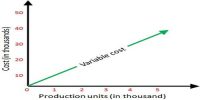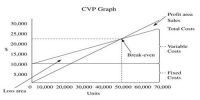Manufacturing overheads are indirect costs of a product. If they are direct costs, they won’t be termed overheads. Manufacturing overhead (also referred to as factory overhead, factory burden, and manufacturing support costs) refers to indirect factory-related costs that are incurred when a product is manufactured. It includes the costs incurred in the factory other than the costs of direct materials and direct labor. This is the reason that manufacturing overhead is often classified as an indirect cost. Along with costs such as direct material and direct labor, the cost of manufacturing overhead must be assigned to each unit produced so that Inventory and Cost of Goods Sold are valued and reported according to generally accepted accounting principles (GAAP).
Manufacturing overhead includes such things as the electricity used to operate the factory equipment, depreciation on the factory equipment and building, factory supplies and factory personnel (other than direct labor). It is a constant rate necessary to produce units. Regardless of the size of your operation, you still have to pay a fixed rate for rent, equipment, utilities, etc. to manufacture a single unit. How these costs are assigned to products has an impact on the measurement of individual products profitability. Because manufacturing overhead is an indirect cost, accountants are faced with the task of assigning or allocating overhead costs to each of the units produced.















